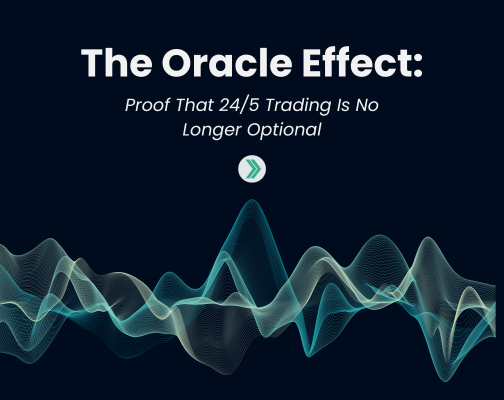Checklist for Ensuring Best Execution with Trade Analysis
While often completed for separate goals, the analysis used for trading strategy refinements and trading compliance are not dissimilar. Some of the trade performance metrics, both sourced internally and from market-wide perspectives, can answer the fundamental questions of best execution analysis. This checklist simplifies what aspects of best execution can be defined from trade performance analysis, enabling traders to refocus time on the actionable insights and less time wading through data and reports.
Planning data collection for best execution analysis
If you don’t already, ensure the metrics discussed below are included in your trade performance analysis. The SEC outlines 3 features of a trade that a broker needs to review for best execution: opportunity to get a better price than quoted, the speed of execution, and the likelihood that the trade will be executed. Broker-dealers seek to optimize each of these features, so addressing them in the same vein as trade performance analysis should be innate.
The holistic view of these three features entail review of internal measures and comparisons with market-wide metrics. The checklist below expands on how each category helps troubleshoot gaps in best execution.
Internal metrics
Risk measures
- Reward:risk ratio (RRR): The ratio of potential reward versus potential risk, each calculated as the difference between entry position and the respective exit threshold.
- R-multiples: Measured in R, risk, defines the potential reward in units of risk. For an RRR of 5:1, the R-multiple is 5R.
Trading ratios
- Fill rate: The percent of orders executed at intended time, price, and size.
- Slippage: The difference between the expected and executed prices of a trade. Often this can be measured in the differences of an order’s price between a trader’s model and production systems.
External metrics
Latency measures
- Tick-to-trade: The time interval between a market tick and an order submission.
- Frequency of stale quote: The count of occurrences where a submitted quote no longer matches the price of a security. Stale quotes are a factor of latency and quote propagation
Market-wide liquidity
- Queue position: The position of a bid in the order book.
- Message rate: The volume of quotes for a security or entire market.
- Order hit ratio: The ratio at which a market fills submitted orders. A large ratio indicates the presence of natural investors where orders intend to be fulfilled.
Checklist to review best execution
1. Compare executed price to market price. The first step in trade performance analysis and best execution trade reviews is to compare the trader or firm’s executed price against other prices on the market within the same time period (whether that be millisecond or microsecond). As straightforward as this seems, when the result is a discrepancy, identifying it is necessary to evaluating why the discrepancy occurred.
Reviewing internal trade history against a market-wide depth-of-book data set should direct the next step of analysis to or away from slippage. Whether the difference between a firm’s executed trades and NBBO is slippage depends on if your firm has the appropriate data to have quoted prices that match the market quotes. If they don’t match, not achieving best execution may be a result of missing the right feed for your trading strategy.
If the quotes are in alignment, and slippage is occurring, the liquidity and latency metrics become key next steps for answering why best execution was not achieved.
2. Determine spikes in liquidity. Liquidity can be valuable for executing large volume orders because the orders can be executed with minimal impact to market price. However, very high liquidity can also cause price volatility at a given exchange or time interval that produces slippage. Queue position and message volume are two valuable indicators of this liquidity. A long depth of book or high message volume may signal to traders to re-route an order to a different exchange. However, without a planned strategy for routing an order, slipping may arise.
Additionally, a decrease in order hit ratio may indicate artificial liquidity and spoofing activity. If the decrease in percent of orders being filled results from an influx of canceled orders, the perceived liquidity might not be resultant of natural investors (where orders intend to be fulfilled). Routing to venues with high order hit ratios ensures that quotes are being matched with natural investors. However, spoofing can skew perceptions of liquidity and make routing for best execution challenging, making ongoing review and tweaks of routing strategy vital. Consider how accounting for volatility in these metrics could improve trade performance and more soundly ensure best execution.
3. Ensure anticipated latency is accurate. Depending on hardware, software, and routing logic, latency could be notably impacting fill rate and ability to achieve best execution. Tick-to-trade (or similar alternatives) can highlight latency resulting from a firm’s trading system or the routing to a specific exchange. To pinpoint the bottleneck, pairing the aggregate tick-to-trade with timestamps at each stage of routing itemizes the process to find the root cause.
Further, cross-referencing them with third-party recorded data can also identify if time stamping discrepancies exist. Comparing to recordings from the SIP or a packet capture option like Exegy’s that consolidates the tapes and syncs timestamps with the NIST can help establish credibility and validity in your internal time stamping.
Finally, tracking and managing frequency of stale quotes—those that reach the market and are no longer timely—can highlight other latency concerns. Beyond supporting the notion that a tech hurdle could be preventing lowest possible latency, a high number of stale quotes could also indicate an occurrence of artificial liquidity or a trading strategy dependent on a delayed trigger. When hardware and software do not present the source of the latency issue, reviewing these metrics in a holistic consideration may more clearly determine the source.
4. Confirm quality and consistency of execution. Once the systemic issues are highlighted and resolved, evaluating algorithmic and display trader performance builds confidence in the quality and consistency of established strategy and process. This portion of analysis falls much closer within anticipated metrics of a buy-side broker-dealer’s trade performance reviews. Tracking risk measures and trading ratios with benchmarks in mind make outliers more evident. Anomalies could indicate an algorithm has become outdated and needs refinement or manual trades are being made with bias in mind and coaching could be valuable.
While these elements may resemble aspects of a trade performance review, they also can serve as a best execution checklist to help ensure traders are achieving the best price for their customers. By viewing this analysis with execution in mind, a trading team can proactively audit their firm’s trading strategies and establish stronger assurance with compliance requirements.




